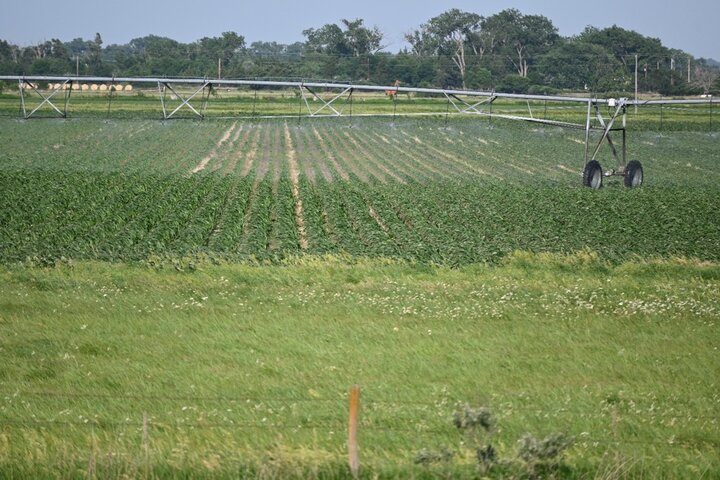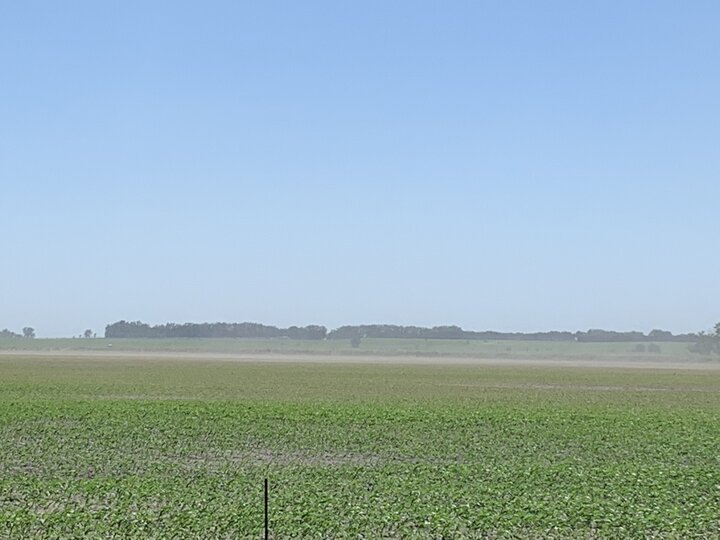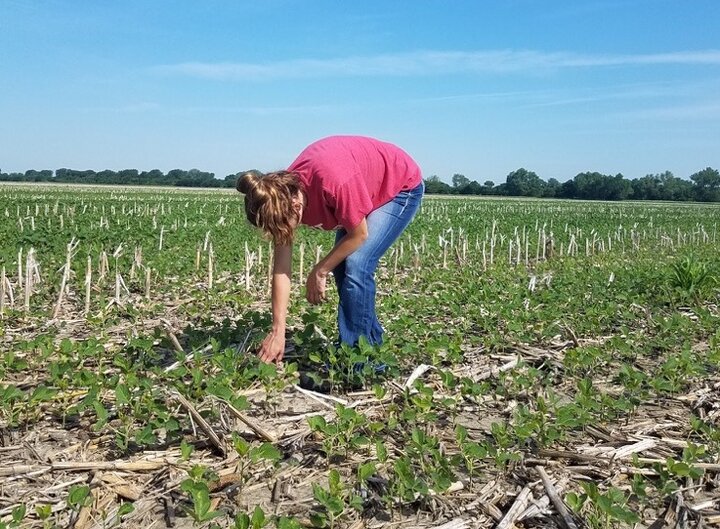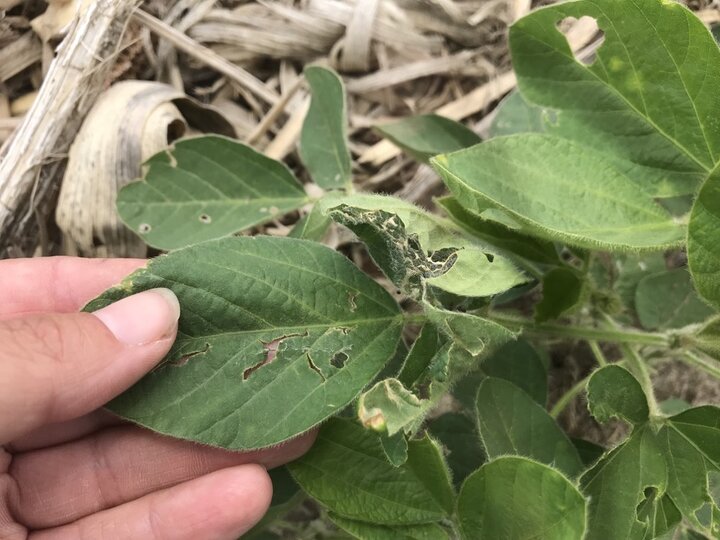Steve Melvin
Extension Educator in Merrick and Hamilton counties
The high groundwater levels this spring in combination with the heavy rains the fourth weekend of May caused a lot of fields in Merrick County to receive flood damage. Many fields had some portions replanted, especially with soybeans. In others, the flooded areas show somewhat stunted crops. Some hail has also damage small areas and high winds tipped over some center pivots.
Overall, the crops are looking good this year. Much of the grass hay has already been harvested. (6/19/20)

Wayne Ohnesorg
Extension Educator in Madison, Pierce and Antelope counties
Hot, dry, and windy conditions have lead to wind erosion in fields. Dust clouds, such as this one from a field near Plainview, NE, are common as the topsoil dries. Subsoil moisture remains in good condition in most soils. (6/18/20)

Laura Thompson
Extension Educator in southeast Nebraska
Soybeans are variable in stage ranging from V2 to flowering. Corn is V6-V10. (6/18/20)


Megan Taylor
Extension Educator in Platte, Boone and Nance counties
Corn is looking a little battered after the high winds and hot/dry conditions of the last few weeks. Growth stages are ranging from V2 to V8. There have been a few fields that have green snapped corn, but only in a handful of areas. There is a little bit of holcus leaf spot in our corn, but little to no disease pressure as of now. There is quite a bit of stink bug damage starting to appear. Also stands affected early season by wireworm/cold conditions are starting to become more evident as our corn progresses. Overall, many farmers are concerned about moisture and pivots have been running for the past several days.
Soybeans are ranging from V2 to R1. There are some fields that have some sand blasting and low emergence due to ponding from several weeks ago. There are also quite a few beans showing IDC (Iron Deficient Chlorosis) in my area. As of now there is little disease pressure to report on, some fields did have some seedling blight issues early. Thistle caterpillars reared there ugly heads once again, but damage was fairly minimal compared to last year. As soybeans continue to develop canopy closure will be very important and some fields are showing heavier weeds pressure throughout my area. Farmers are focused on moisture and getting post spraying completed with the challenging weather conditions.
Alfalfa second round cutting is underway. Alfalfa weevil pressure pushed several producers to cut a little earlier. Yields for first round have generally been a little lower than previous years, but the cold snap early did set some of the fields back. Many fields that were cut in the last two weeks are recovering nicely, but are now starting to show some heat stress. Thinner stems and some leaf crinkling is noticeable throughout fields.(6/18/20)


Kat Caswell
Extension Educator in Hitchcock, Hayes, Frontier and Red Willow counties
Corn and sorghum are progressing. First cut of alfalfa has been cut and bailed. Oat and grass is beginning to be cut for hay. Wheat (winter and spring) is at milk to soft dough stage. Some rust is in the area in wheat, but is minimal in the fields I observed. Drought stress is beginning to impact some wheat in the area. Field peas have the first flat pods appearing. Palmer amaranth is around in full force and spraying is on-going. (6/15/20)


